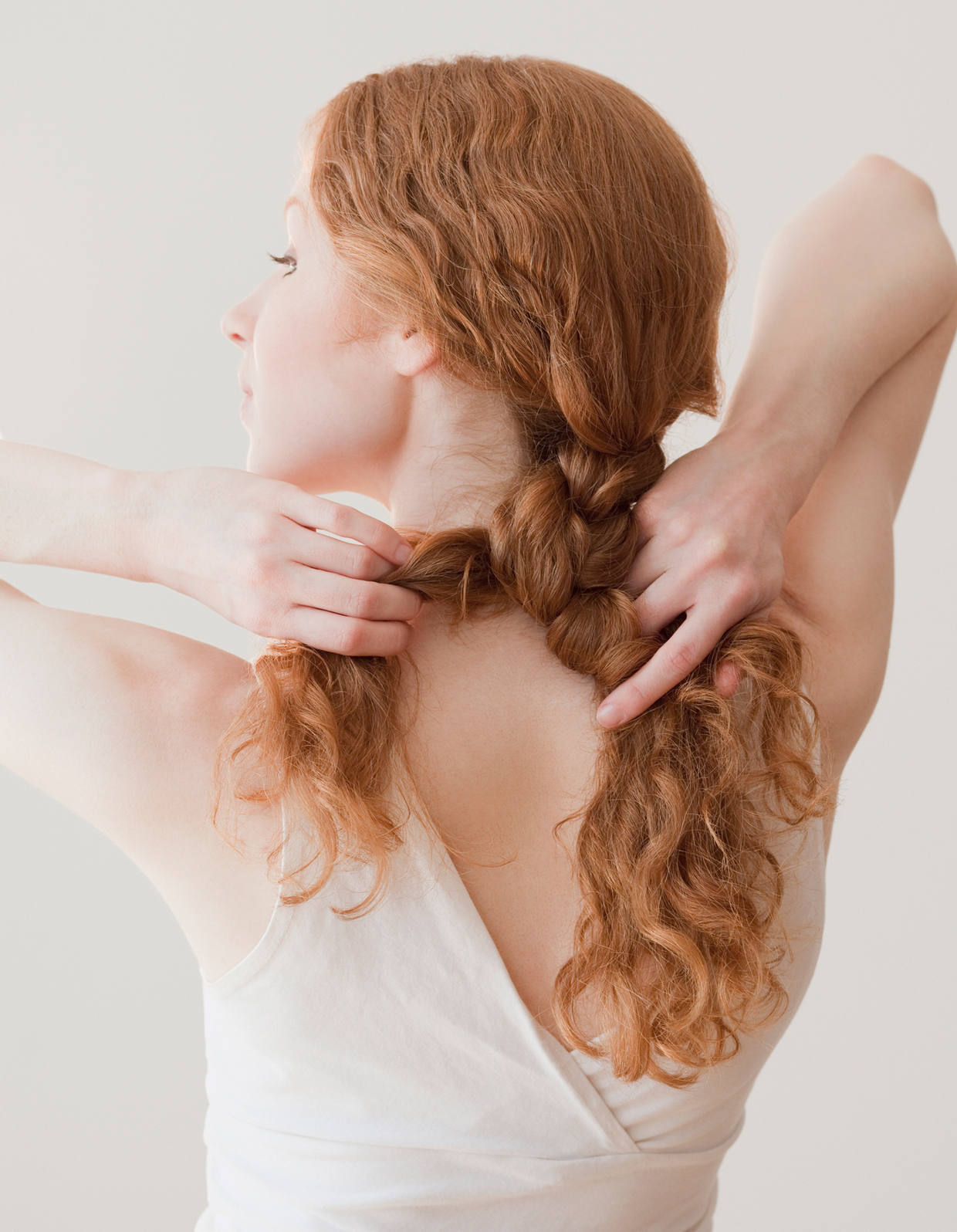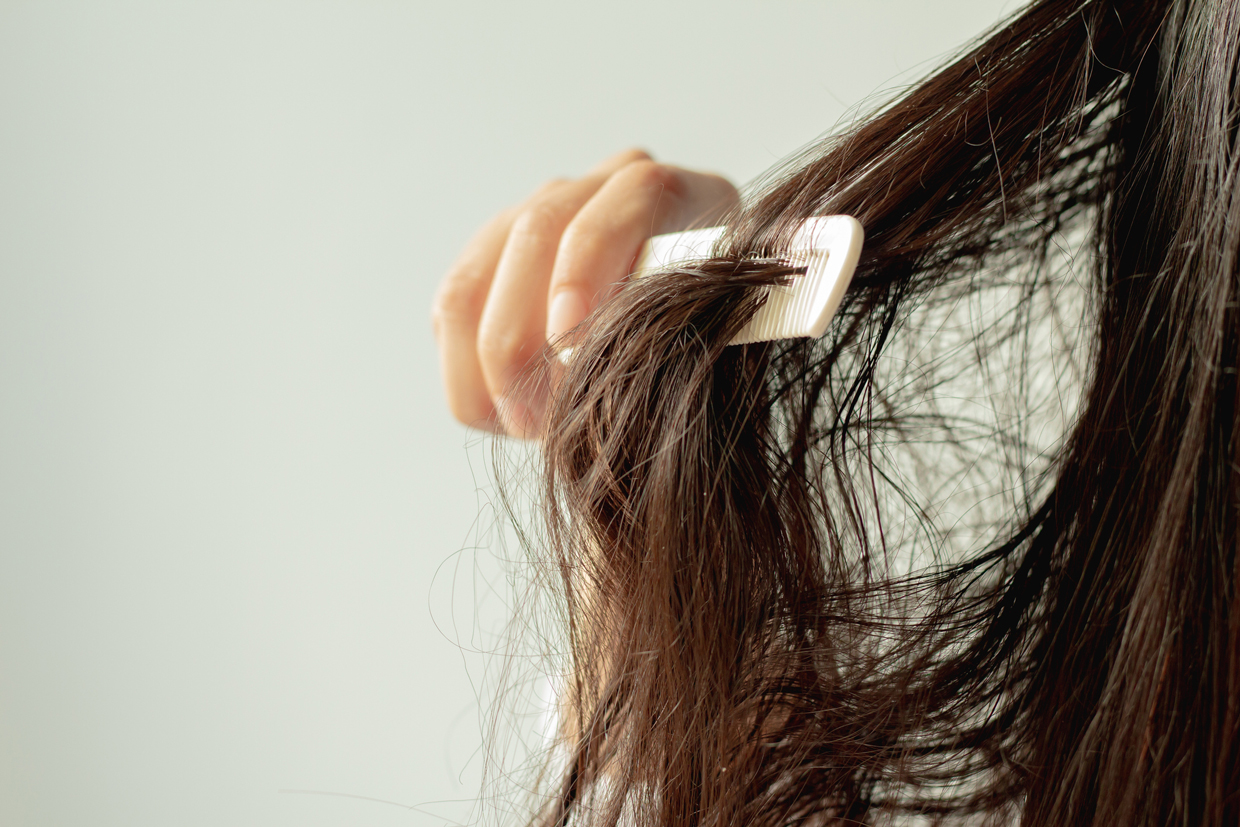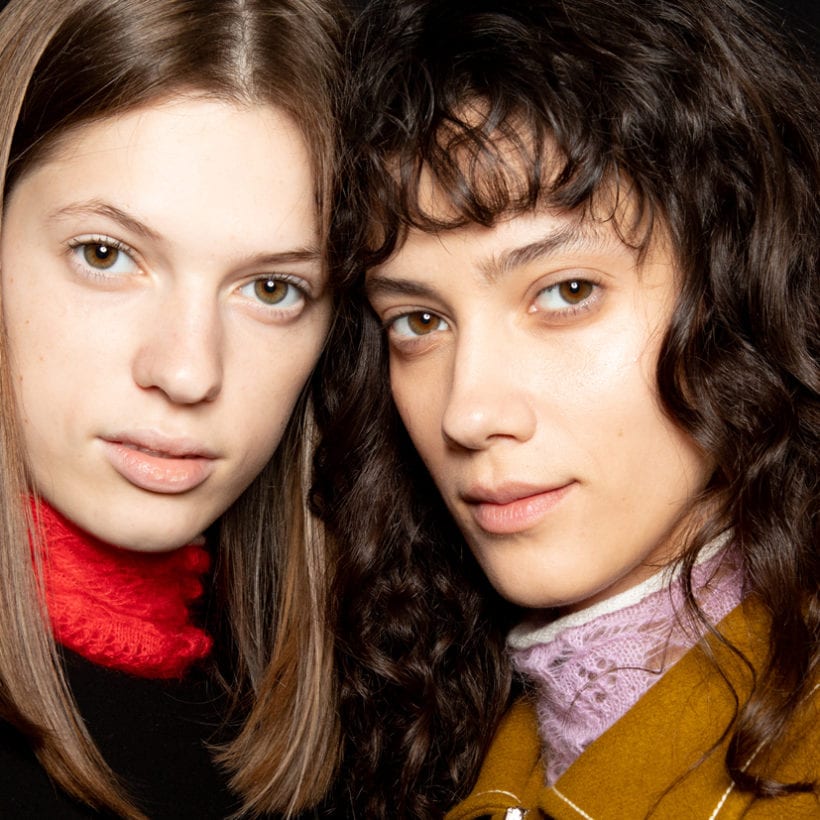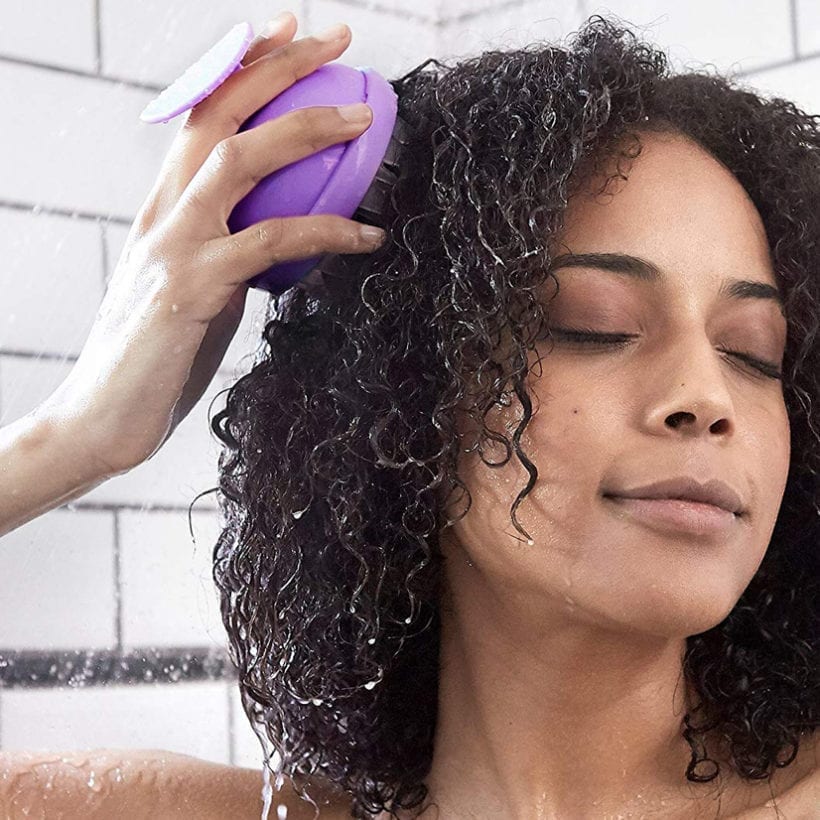Every season we are faced with new skin and hair care concerns prompted by the environment. And, the winter season is perhaps the harshest. With frigid temperatures and drier than usual climates, we might already be experiencing some winter beauty blues as Mother Nature prepares for the cold weather season. One thing we’ve noticed in particular is how, without fail, our hair always seems to get extra knotted in the winter. And, come to find out, there’s a totally logical reason for it.
Up ahead, we discuss why hair gets extra knotted when the weather outside is frightful, plus how to protect against it (and how to detangle when the inevitable occurs) with Philip Berkovitz, Hollywood’s go-to haircare specialist and founder of Philip B. Botanicals.
Why Hair Gets More Knotted During the Winter Season
According to Berkovitz, our hair is a lot like our skin in that the moisture in our complexions and hair tend to evaporate in cold dry climates — it quite literally goes “poof” into cold air. “Hair is similar to a sponge. It is designed to absorb water and other substances from the environment [and] it is also equally as susceptible to losing moisture,” explains Berkovitz. “Maintaining the moisture in our hair preserves hair health and its elasticity,” he adds.

Berkovitz likens it to your favorite pair of leather boots. When they are well maintained (aka, conditioned), “they are soft, supple, and flexible.” But, if they aren’t nourished and left to the elements, they can become hard, dry, and cracked. Hair follows suit. “In winter, as the hair becomes more dehydrated, damaged, and brittle, the cuticle layer of cells no longer lays flat,” explains Berkovitz. This creates rough, raised cells that form into hard scales and stand out along the hair shaft, becoming more damaged and porous. “[The] more damaged and porous, the more likely the scales will connect and create tangles,” Berkovitz adds.
In addition to the environment, hair can become extra tangled with some of the cold weather accessories worn throughout the winter season. From wrapping scarves around our decolletage and hair to wearing beanies that keep strands snug together around necks, these accessories keep us warm but can wreak havoc on our hair if we aren’t careful.
How to Prevent Knotted Hair
There are ways to prevent hair from tangling this season and, according to Berkovitz, it calls for some serious moisture. “Porous, dry hair is thirsty! Give it nourishment and moisture,” he advises. “Start by changing to a moisture-rich conditioner and comb through. Then, rinse with cold [water] to help close the cuticle,” he adds, noting that cold water helps coat the hair for a smoother — aka, snagless — finish. Berkovitz also recommends not going to bed with wet hair. “Sleeping with damp tresses often leads to unnecessary tangles, so dry hair before bed.” A pH-balancing spray formulated with apple cider vinegar is also a way to keep hair hydrated and moisture balanced. This “flattens the cuticle [and] eliminates the broken surfaces that will tangle,” notes Berkovitz.

Another tip for preventing tangles is to brush your hair. Berkovitz recommends giving tresses at least 100 strokes a night and says a proper brush and how you brush also matters. “Use a natural boar bristle brush on dry hair,” he explains, noting that the bristles will “pick up the natural scalp oils and move it down the hair shaft helping to nourish and close the cuticle.”
If your hair is naturally prone to dryness, Berkovitz recommends following the above precautions as well as incorporating a leave-in conditioner into your regimen to “soften [the] cuticle and make it more pliable.” Adding a humidifier — such as the Dyson Purifier Humidify+Cool PH03 — to your bedroom and turning it at night during your regeneration process is also an excellent way to add hydration back into your environment (and your skin will also benefit).
To prevent knotted hair when wearing a beanie or scarf, first, make sure to brush your hair thoroughly before accessorizing. With a scarf, it’s best to sweep your hair away from your neck in a ponytail or bun. But, if you wish to wear a beanie and scarf, braiding your hair can also do the trick. With a beanie, make sure your hat doesn’t sit too low on your neck and, instead, grazes the tops of your ears, as pinning the hair to your neck can create more opportunities for knots to form.

What to Do If You Have Knots in Your Hair
If you already have knots in your hair, don’t worry, there are safe ways to get it out without causing damage. Berkovitz says the first step is to isolate the knot and “approach the tangles wet or damp to lessen breakage during the detangling process.”
Using an apple cider vinegar rinse on the area can help restore balance and close the cuticle, making knots easier to tackle. You can also up the ante by applying a hair mask to the area and gently combing through. Adding in moisture “creates a slip to help the hair release from the knot,” explains Berkovitz.
As for combing, Berkovitz says to use firm strokes and start by combing downwards from the top of the knot to the bottom of the knot, “holding the section below it taught.” This motion should soften the tangled area and free up the strands but, if the knot is particularly stubborn, it’s best to take a break from combing and run your fingers gently through the hair “toward the knot to try and remove some of the hair.” Berkovitz says the final step in detangling is “patience and persistence” and, if all else fails, to re-isolate the knot and start again.
Knotted hair is a pesky side effect of winter weather but, with some extra R&R (and a lot of hydration), preventing tangles is totally attainable.
We only recommend products we have independently researched, tested, and loved. If you purchase a product found through our links, Sunday Edit may earn an affiliate commission.







